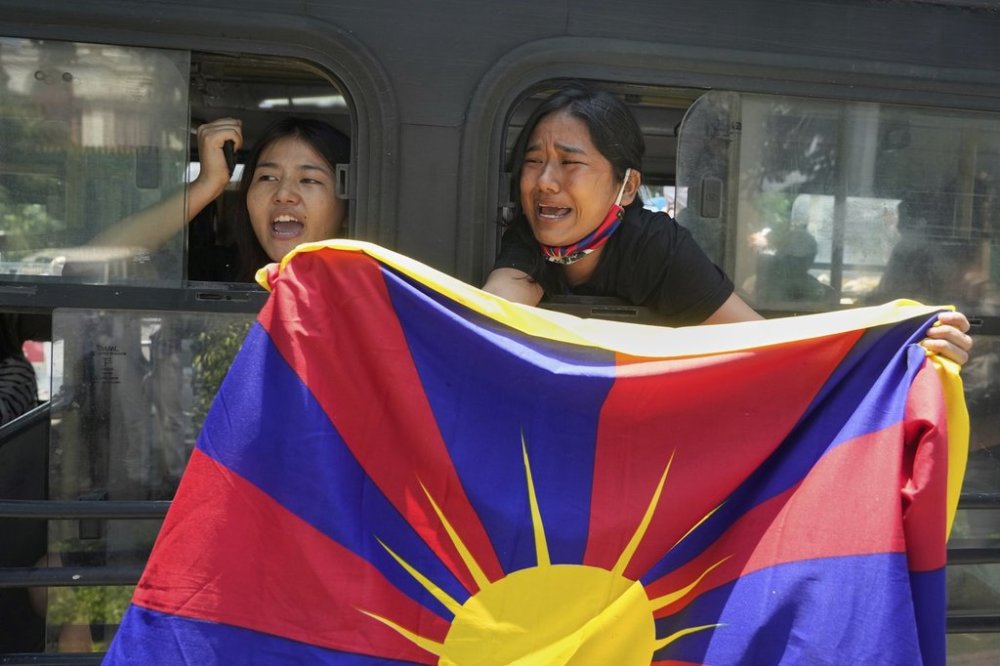China’s Xi makes a rare visit to Tibet to mark 60 years of contested rule there
Advertisement
Read this article for free:
or
Already have an account? Log in here »
To continue reading, please subscribe:
Monthly Digital Subscription
$1 per week for 24 weeks*
- Enjoy unlimited reading on winnipegfreepress.com
- Read the E-Edition, our digital replica newspaper
- Access News Break, our award-winning app
- Play interactive puzzles
*Billed as $4.00 plus GST every four weeks. After 24 weeks, price increases to the regular rate of $19.00 plus GST every four weeks. Offer available to new and qualified returning subscribers only. Cancel any time.
Monthly Digital Subscription
$4.75/week*
- Enjoy unlimited reading on winnipegfreepress.com
- Read the E-Edition, our digital replica newspaper
- Access News Break, our award-winning app
- Play interactive puzzles
*Billed as $19 plus GST every four weeks. Cancel any time.
To continue reading, please subscribe:
Add Free Press access to your Brandon Sun subscription for only an additional
$1 for the first 4 weeks*
*Your next subscription payment will increase by $1.00 and you will be charged $16.99 plus GST for four weeks. After four weeks, your payment will increase to $23.99 plus GST every four weeks.
Read unlimited articles for free today:
or
Already have an account? Log in here »
TAIPEI, Taiwan (AP) — Chinese leader Xi Jinping made a rare visit to Tibet on Wednesday to mark the 60th anniversary of the consolidation of Beijing’s long-contested rule over the Himalayan territory.
Xi arrived in Tibet’s regional capital of Lhasa, where he “received a warm welcome from people of various ethnic groups” who waved bouquets of flowers and danced “to joyful rhythms,” the Xinhua News Agency said.
The agency said Xi urged the building of a “modern socialist” Tibet “that is united, prosperous, civilized, harmonious and beautiful.”

Communist forces occupied Tibet in 1951. In 1965, Mao Zedong’s single-party dictatorship established the Tibet autonomous region. Decades of political repression followed, including the demolition of some Buddhist monasteries and the imprisonment of monks.
Recent years have seen the large-scale migration of majority Han Chinese to the high-altitude region, the virtual closure of Tibet to journalists and foreigners, the removal of Tibetan children from their families to boarding schools where they are taught in Mandarin, and the repression of all forms of political or cultural expression outside Communist Party control.
China also insists on the right to appoint a reincarnation of the Dalai Lama, Tibetan Buddhism’s highest-ranking leader, who recently turned 90 and lives in self-imposed exile in neighboring India after fleeing Chinese rule in 1959.
On Tuesday, exiled Tibetans protested in India against the Chinese foreign minister’s visit there.
Critics say repression in Tibet has become more systematic and wide-reaching since the crushing of anti-government protests in 2008, while China claims to have reduced poverty and built up the region’s infrastructure.
China claims Tibet has been part of its territory for centuries, but many Tibetans say they were essentially independent for most of that time under their Buddhist theocracy.
China’s contested border with India runs along Tibet’s southern edge, where China has been building roads and other infrastructure for possible military use.
The Free Press acknowledges the financial support it receives from members of the city’s faith community, which makes our coverage of religion possible.


